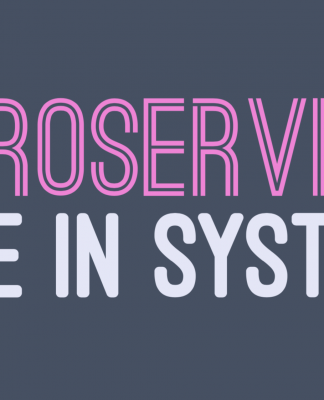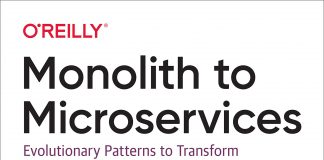This paper presents a concise summary of various software architecture patterns, offering insights into their unique characteristics, applications, and impacts on software design. These patterns represent key approaches and strategies in modern software engineering, each addressing specific requirements and challenges. The objective is to provide a high-level understanding and a classification of these patterns, aiding architects and developers in selecting the most suitable approach for their specific needs.
Software architecture patterns are fundamental guidelines used to address complex architectural challenges in software development. They provide structured solutions to recurring problems, ensuring efficiency, scalability, and maintainability.
It is not an exhaustive list, but it will be updated each time I publish new papers concerning architecture patterns.
Backend For Frontend (BFF)
Involves creating specific backend services tailored to the requirements of individual frontend applications, optimizing communication and data delivery.
Focus: Creating backend services tailored to specific frontend applications.
Benefits: Optimizes communication and data delivery.
Trade-offs: Can lead to duplicated logic, requires additional maintenance.
Architecture Patterns : Backend For Frontend (BFF) Pattern
What is BFF?
Publish/Subscribe Pattern
Focus: Decoupling producers and consumers in messaging systems.
Benefits: Enhances scalability and system flexibility, supports asynchronous communication.
Trade-offs: Increases message management complexity, depends on broker reliability.
Architecture Patterns : Publish/Subscribe
What is Publish/Subscribe ?
Sidecar Pattern
Focus: Enhancing or extending the functionality of a primary application.
Benefits: Isolates and modularizes functionalities, easier maintenance.
Trade-offs: Can increase system complexity, additional resource consumption.
Architecture Patterns : Sidecar
What is the Sidecar Pattern?
Data-Driven Testing
Focus: Enhancing testing processes by using data-driven methodologies.
Benefits: Increases test coverage, improves efficiency.
Trade-offs: Requires thorough data management, potential for data-related errors.
Architecture Patterns : Data Driven Testing
What is Data Driven Testing ?
C4 Model
Focuses on providing a comprehensive visualization of software architecture, breaking it down into four levels: Context, Containers, Components, and Code. It aids in understanding and communicating the software structure at different abstraction levels.
Focus: Visualization of software architecture across four levels.
Benefits: Enhances understanding and communication of software structure.
Trade-offs: May be overly complex for smaller systems.
Architecture Modeling : C4 Model
What is the C4 Model?
Domain-Driven Design (DDD)
Centers on aligning software design closely with domain complexities, using a model-driven approach. It emphasizes collaboration between technical and domain experts to create a common language and shared understanding.
Focus: Aligning software design with domain complexities.
Benefits: Facilitates collaboration and creates a shared language.
Trade-offs: Requires deep understanding of the domain, potentially complex.
Architecture Approach : Domain-Driven Design (DDD)
What is Domain-Driven Design (DDD)?
Strangler Pattern
Aims at gradually replacing parts of a legacy system, allowing for incremental updates and smooth migration to new technologies without disrupting existing functionalities.
Focus: Gradual replacement of legacy systems.
Benefits: Allows incremental updates without disrupting existing functionalities.
Trade-offs: Can be slow and resource-intensive.
Architecture Patterns : Strangler Pattern
What is Strangler Pattern?
Circuit Breaker
Provides a way to handle failures gracefully, preventing a cascade of failures in distributed systems. It acts like an electrical circuit breaker, stopping the flow of requests to a failing service to allow recovery.
Focus: Handling failures in distributed systems.
Benefits: Prevents cascading failures, allowing services time to recover.
Trade-offs: Requires careful threshold settings to avoid false
Architecture Patterns : The Circuit-Breaker
What is “Circuit Breaker”?
API Gateway
Acts as an intermediary layer that manages and routes requests from clients to various microservices, providing a unified interface, security, and other cross-cutting concerns.
Focus: Managing requests to microservices.
Benefits: Provides a unified interface, enhances security.
Trade-offs: Potential single point of failure, increased complexity.
Architecture Patterns : API Gateway
What is “API Gateway”
Command Query Responsibility Segregation (CQRS)
Separates read and write operations into distinct models, optimizing performance and scalability, especially in complex and high-demand environments.
Focus: Separating read and write operations.
Benefits: Optimizes performance and scalability.
Trade-offs: Adds complexity, may lead to eventual consistency issues.
Architecture Patterns : Command Query Responsibility Segregation (CQRS)
What is CQRS?
Outbox Pattern
Addresses the challenge of ensuring reliable message delivery in distributed systems, particularly in microservices architectures, by temporarily storing messages before forwarding them.
Focus: Ensuring reliable message delivery in distributed systems.
Benefits: Prevents data loss during transmission failures.
Trade-offs: Adds implementation complexity, may introduce latency.
Architecture Patterns : The Outbox Pattern ( Beyond Microservices)
In the intricate tapestry of distributed systems, particularly within the microservices architecture, the challenges of…
Multi-tenancy
Discusses implementing a multi-tenant system using Keycloak for authentication, and Angular and Springboot for frontend and backend development, respectively.
Focus: Implementing a multi-tenant system using specific technologies.
Benefits: Efficient authentication management in SaaS applications.
Trade-offs: Complex setup, requiring integration of multiple technologies.
Architecture Patterns : Multi-tenancy with Keycloak, Angular and Springboot
Multi-tenancy is a critical aspect of contemporary software architecture. It assists in overcoming significant…
Architecture Anti-Patterns
Highlights common pitfalls and ‘anti-patterns’ in software architecture, offering insights into what to avoid for maintaining healthy and efficient software systems.



















